I did another border run recently to pick up some more eBay goodies.
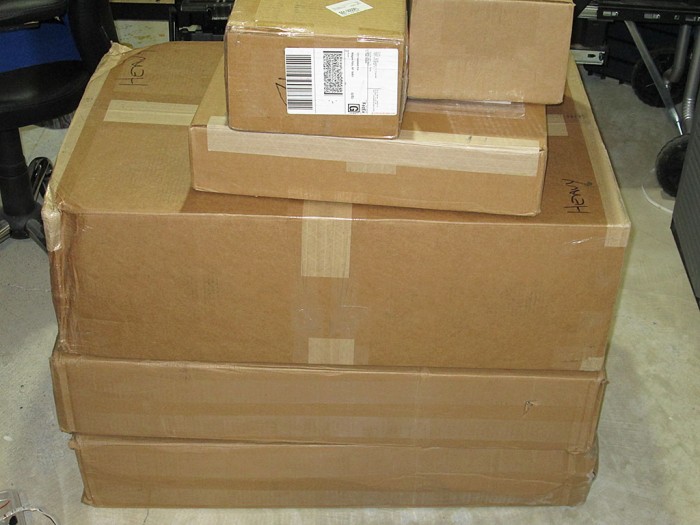
Over the last month or so I scored some incredible deals on server hardware. Picked up a couple of Intel SR1680MV Dual node servers, my favorite in 1U config right now. A really cheap HP Storageworks MSA70 with 25 Trays and some other items.
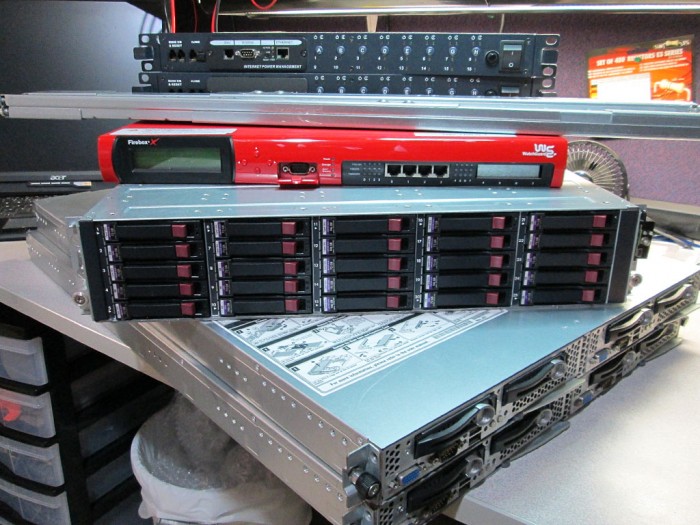
Also picked up a pair of Minuteman Remote Power Management switches. These babies use to sell for over $800 a piece, I picked them up for about $20 each. Now granted these are most likely VERY old devices. I’ve never heard of Minuteman but for that price I was very much willing to give them a shot.
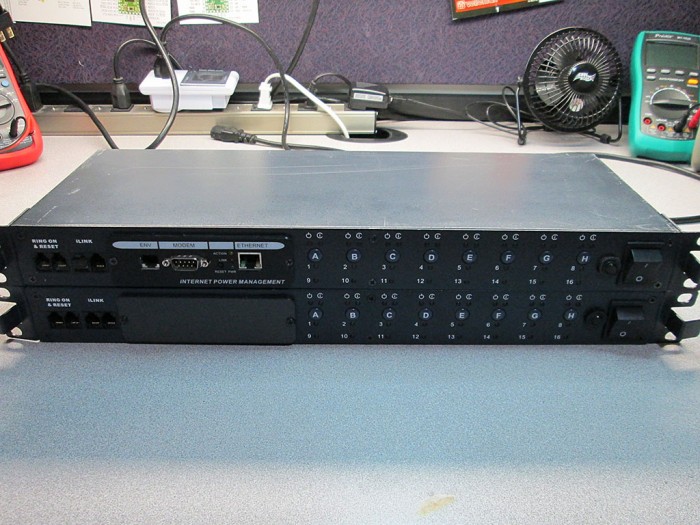
Each switch can manage 8 power ports. Each port can be designated for remote operation (via HTTP, Telnet or SNMP) or local only.
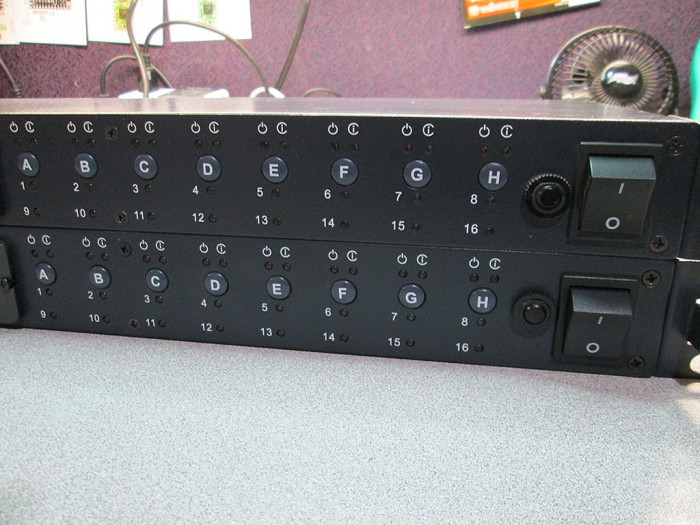
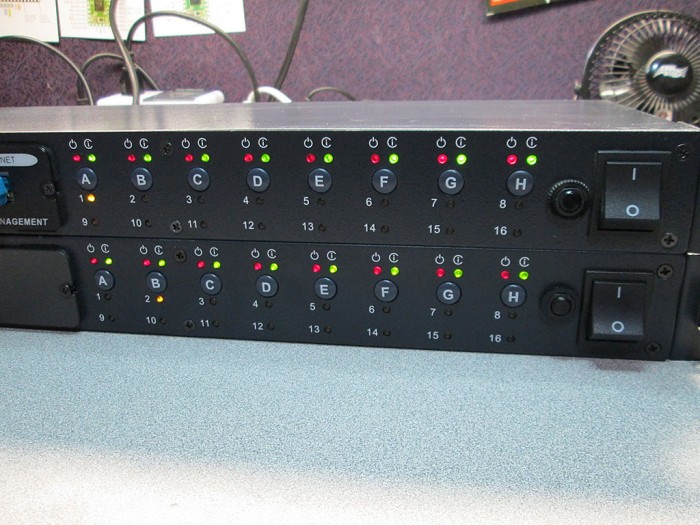
The switches come with 8 power ports each rated for a total of 12A @ 120V. Unfortunately the switches do not report actual power draw at port or total. Each power port comes with it’s own RJ11 port that can be use to interface with a respective UPS or Computer, a feature I’ll most likely never use.
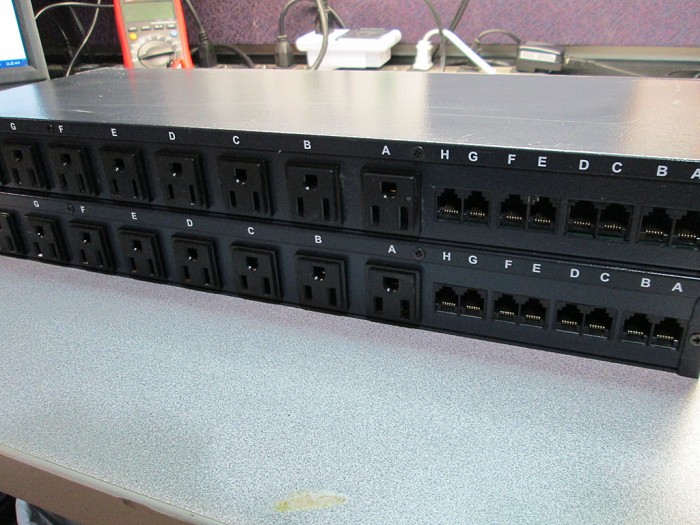
The switches were both “supposed” to come with a management card but the seller screwed up and sent me only one. Since I already considered this a pretty good deal I didn’t want to send them back even though the seller offered a full refund.
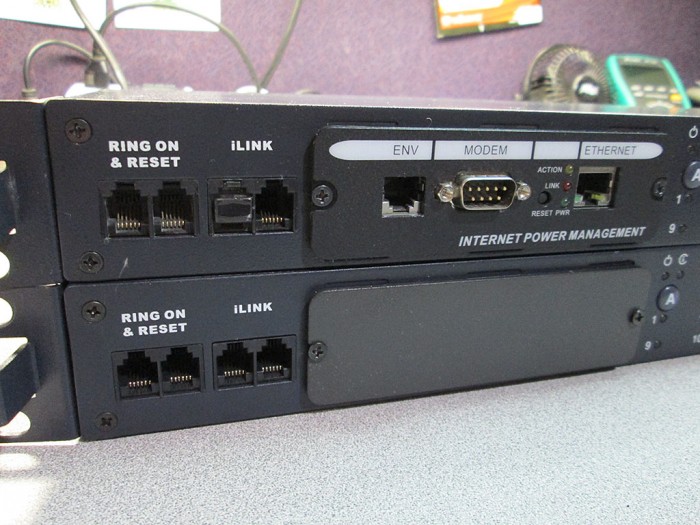
The lack of a second management module isn’t a big deal since these devices can be chained and managed from a single card, but more on that later.
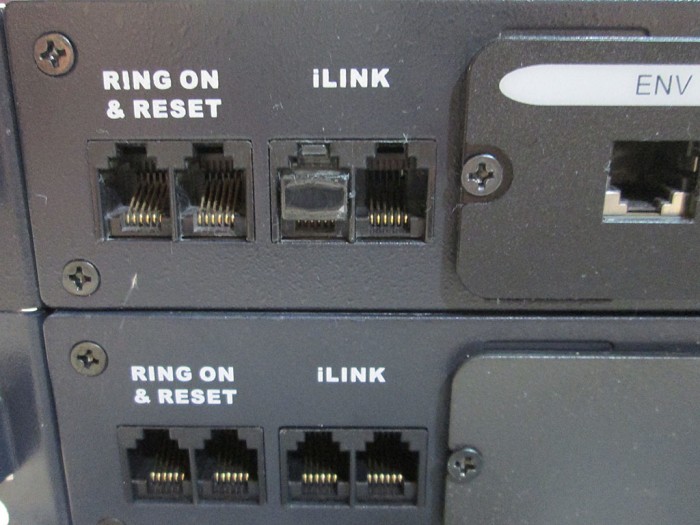
First order of business is to try to log into the thing. Unfortunately the devices came with no instructions or passwords of any kind. So, I connected the switch to my lab network and checked to see if by any chance the device is set for DHCP. No luck, DHCP lease list didn’t show any new devices on the network. A quick search for a manual on the Minuteman site and I came across SNMP based discovery snmp32_utility.
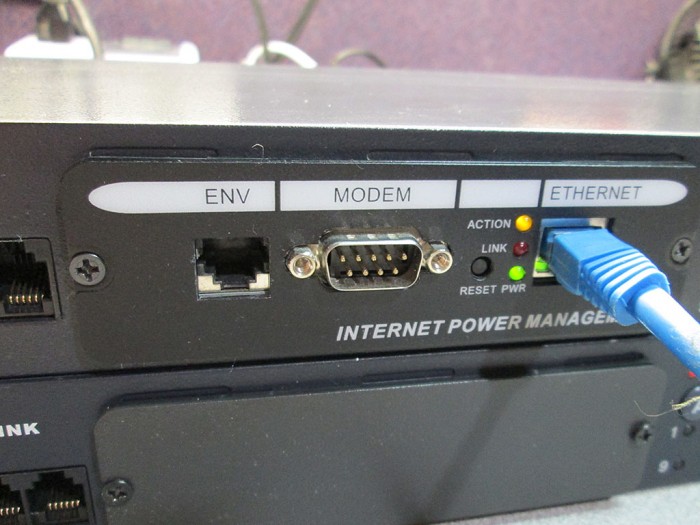
Once again ran into a small issue as the software doesn’t seem to work under Windows 7 and up (network list is empty).
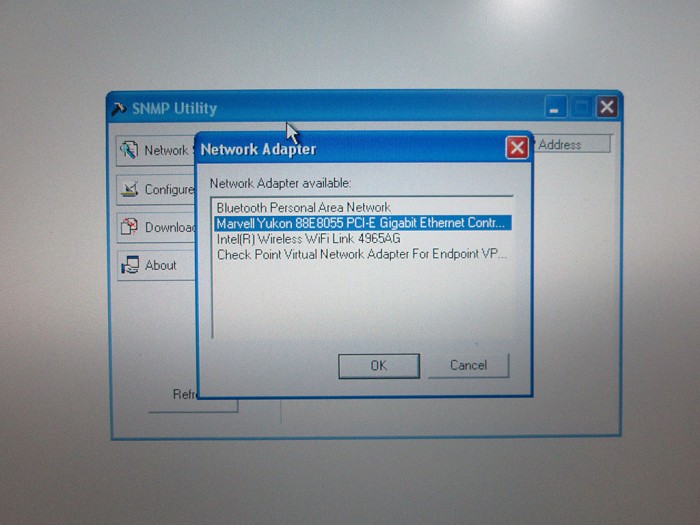
Fortunately I have an old toughbook kicking around that has Windows XP 32 bit installed. A quick install and bingo! the device shows up. Attempting to access the device resulted in a password prompt. Once again I lucked out since the password was simply set to “admin” and it only took me 3 tries to figure it out.
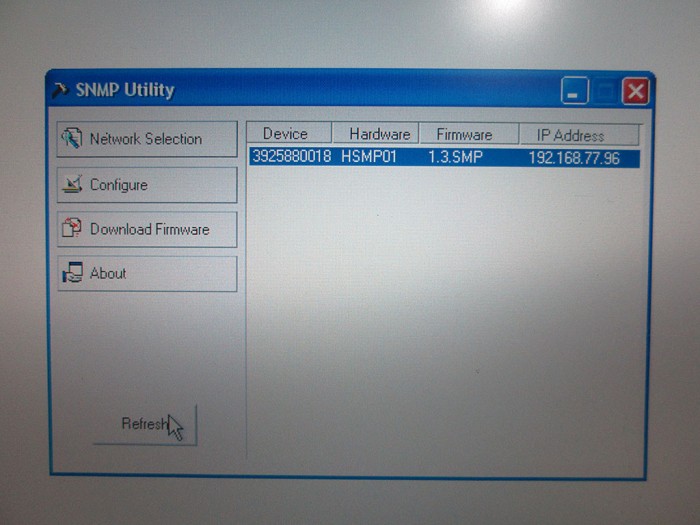
I cleared the password and set the device for DHCP.
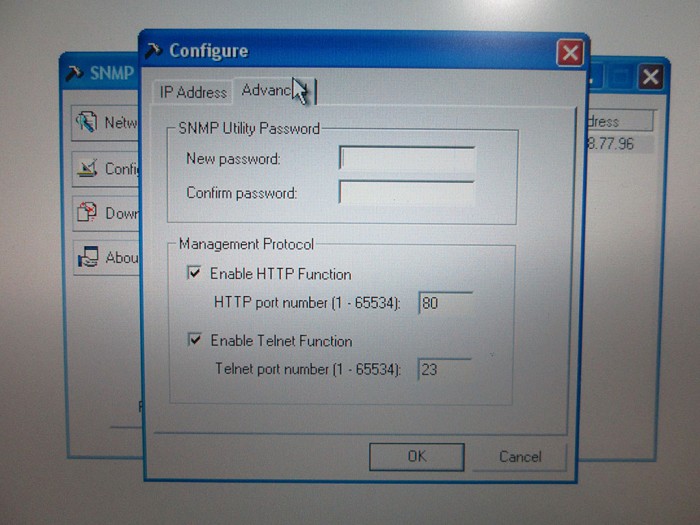
Once web access got enabled I fired up my browser and pointed it at the device IP. Crap! Another password prompt. This time no amount of defaults was able to bypass this login screen.

Fortunately, through a lot of web searching I found a procedure to factory reset the management card which clears any passwords on it. The process is as follows
* Remove the screws holding the management card in place * Using a small tool press the "Reset" button on the management card and hold * While holding the reset button pull the management card out of the switch unit * Continue holding the reset button, wait a few second then re-insert the card to power it up. * Continue holding the reset button for another 40 seconds and release. The management card has been fully reset.
Once the card resets, reconfigure the card for DHCP again and use blank login/password on the site credentials and *boom* we’re in.
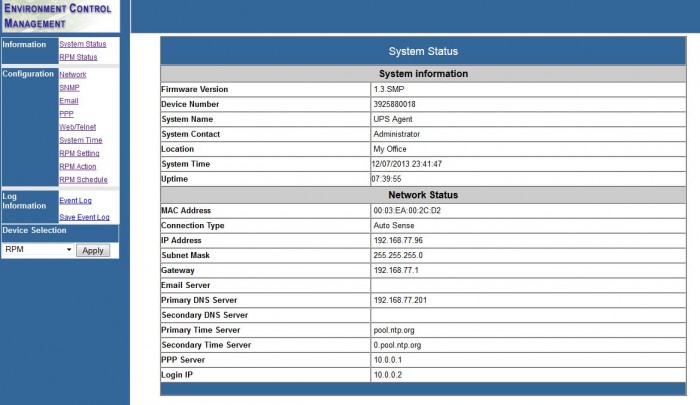
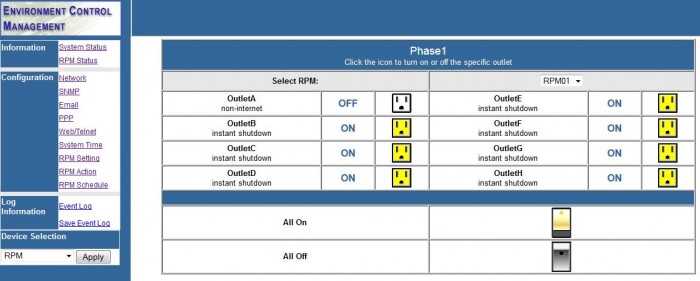
Now that we have access to the card, time to figure out how to chain the two. Based on the manual for the device. The switch comes with an “iLink” cable and a terminator plug. I received no cable and only one plug.
I picked up a 6 lane RJ11 cable and plugged it into the boxes as described by the manual. However, no matter how I placed the cable and the one terminator plug, the device would never see the second box.
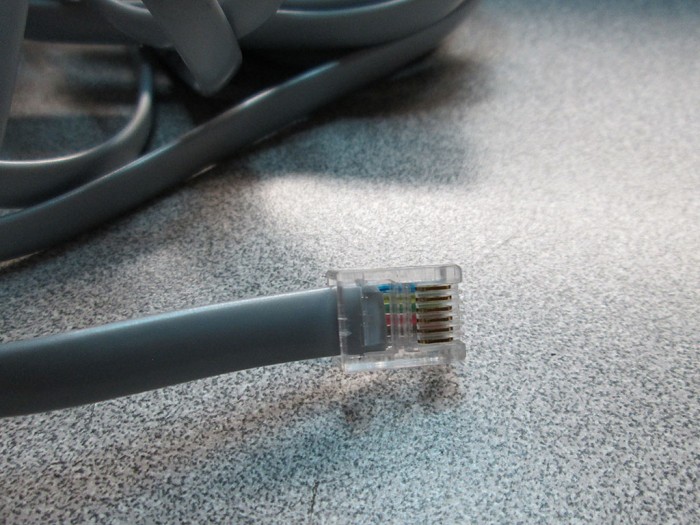
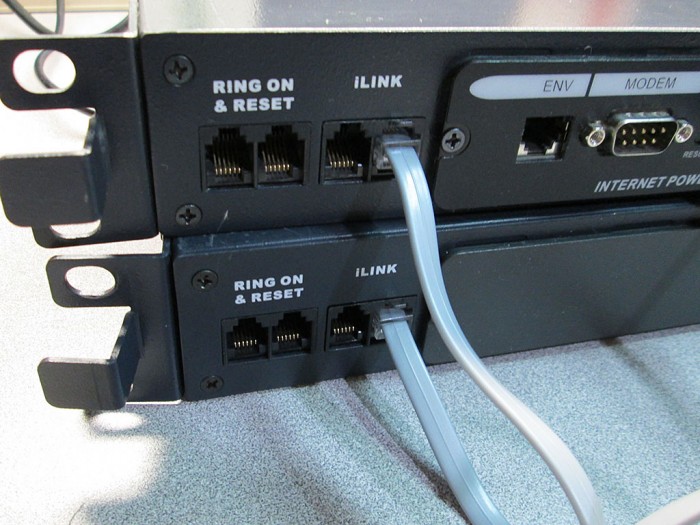
My first assumption was that I need a second terminator plug to close the loop. Since I only had one I decided to figure out how it works and build another one. I was pretty sure that due to the small size of the plug only passive circuitry is used inside. A quick run-through with a multi meter confirmed my theory and I determined the internal connections in the plug.
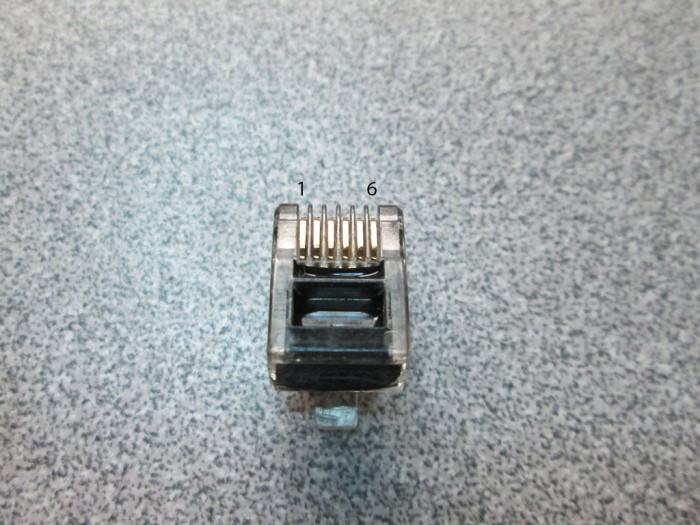
The pins on the terminator plug are simply connected via 1K and 5K resistors.

All I had to do was build a similar plug. I quickly whipped up a ghetto plug for testing and confirmed that it works since the master switch behaves slightly differently with it plugged in.
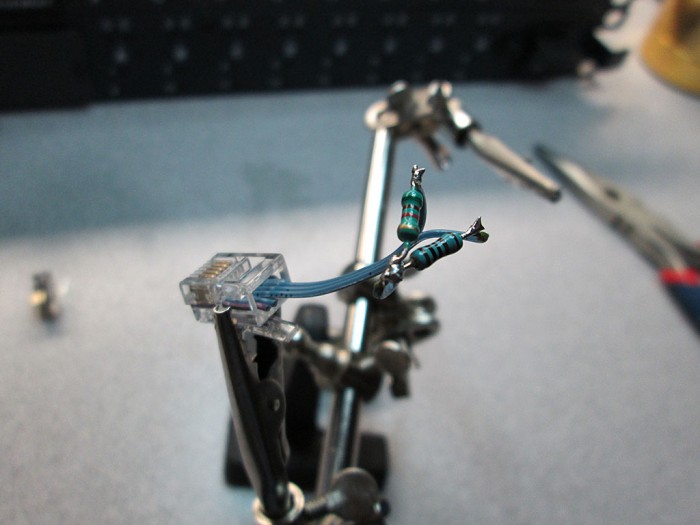
Once again ran into a roadblock. The addition of the second terminator did not result in connectivity between the two switches. Upon closer inspection of the cable I realized that the wires in the cable are not straight-through but rather reversed.

I snipped the cable, reversed the wires and put another RJ11 plug on it and EUREKA! Both switches are accessible via the management interface. It also turns out that the terminators seem to be unnecessary in this configuration as the switches had no problem operating with the terminators removed.
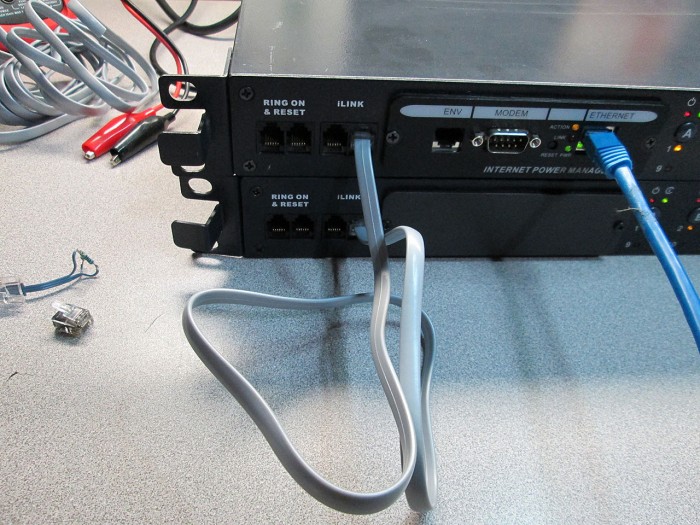
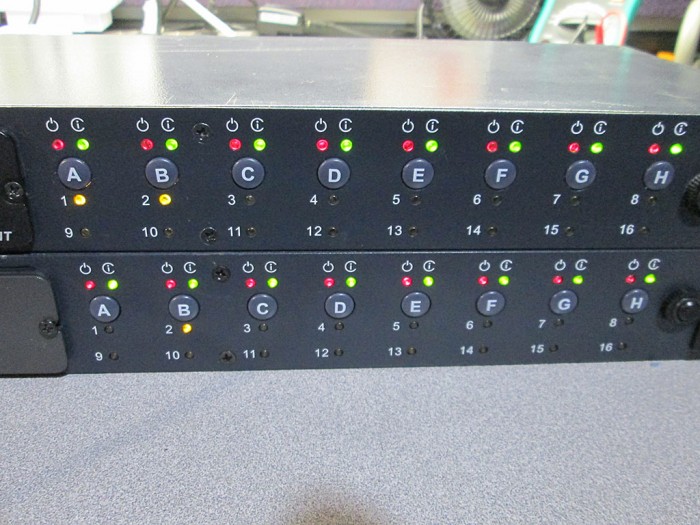
I will probably toss these into one of my data centers where I’ll be able to reboot machines without having to drive for over an hour.
Files for this product:
snmp32_utility
SNMP-32-SL_manual
RPM_manual